Summary
- Ohm's Law
- Electric power
- Series and parallel circuits
- Quiz bonus Ch. 20
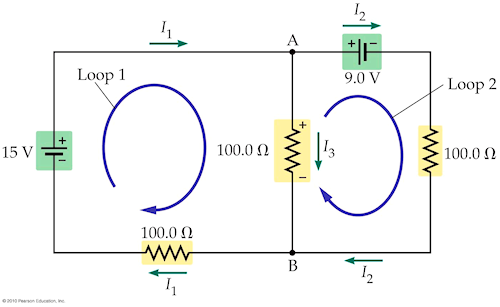

- Circuit applet
- Kirchhoff's rules
- Junction rule: conservation of current
- Loop rule: ΔVloop = 0
Example #1
- Kirchhoff's rules video
End of material on Exam I
- Exam I
- Bring a calculator (no mobile devices allowed) and
your prepared 8-½×11 reference sheet
- 3 free-response questions, some with multiple parts (50 pts)
- 7 true/false questions (14 pts)
- 9 multiple-choice questions (36 pts). Three of these require a calculation.
- Lecture learning outcomes
A student who masters the topics in this lecture will be able to:
- explain Kirchhoff's junction rule in terms of conservation of charge
- explain Kirchhoff's loop rule in terms of conservation of energy
- use Kirchhoff's rules to characterize an electric circuit with multiple loops
Practice:
Try these additional examples
Example #2
Example #3
Prepare:
Read textbook sections 21-6 and 21-7 before the next lecture
gc6 17.q8
If V = 0 at a point in space, must E = 0 there? ____
If E = 0 at a point in space, must V = 0 there? ____
A. yes . . . yes
B. yes . . . no
C. no . . . yes
D. no . . . no
Answer
sj6 28.18
If the ammeter reads 2.00 A, what is the unknown battery voltage ℰ in Fig. P28.18?
 A. 15.2 V
A. 15.2 V
B. 12.6 V
C. 6.50 V
D. 3.33 V
applet
Answer
Walker5e EYU 21.5
Which of the following is the correct statement of Kirchhoff's loop rule for loop 1?

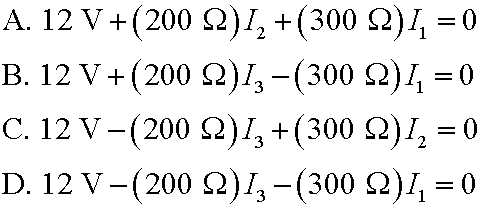
Answer
Walker5e 21.56c
If point A in the figure is grounded (V = 0), what is the electric potential at point D?
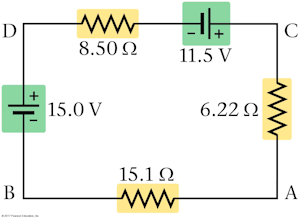 A. 0 V
A. 0 V
B. −13.42 V
C. +1.58 V
D. +5.53 V
Answer
D. no . . . no
There is no general relationship between the value of V and the value of E. Instead, the magnitude of E is equal to the rate at which V decreases over a short distance. Consider the point midway between two positive charges. E is 0 there, but V is high. Or, consider the point midway between two negative charges (not shown below). E is also 0 there, but V is low, because it is negative. Finally, consider the point midway between positive and negative charges of equal magnitude. There E is not 0, because it points toward the negative charge, but V is zero.
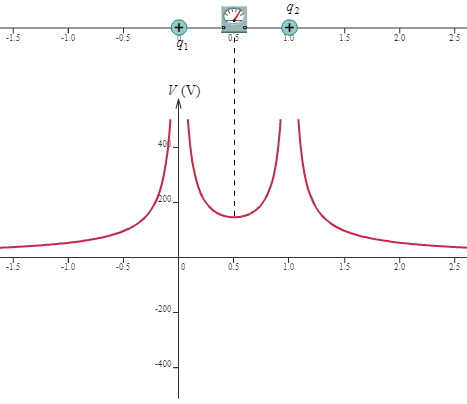
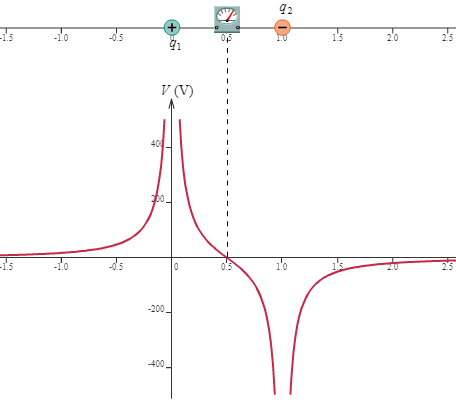
B. 12.6 V
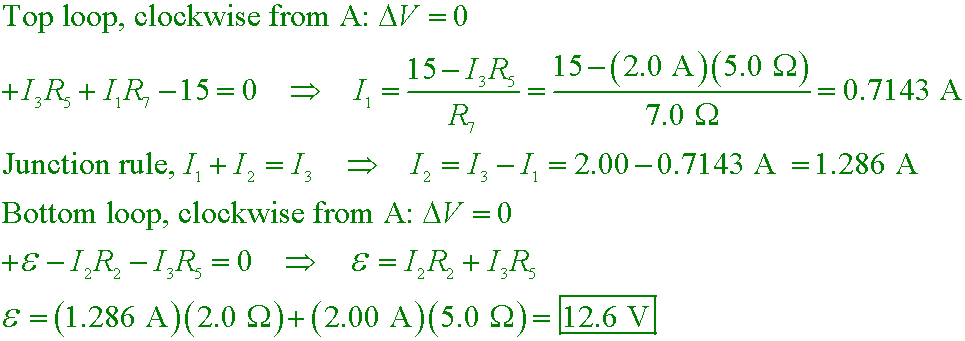


Starting in the lower left corner of loop 1 and going clockwise (as
indicated by the purple arrow), we go uphill through the battery, downhill with
I3 through the 200-Ω resistor, and downhill with
I1 through the 300-Ω resistor.

C. +1.58 V
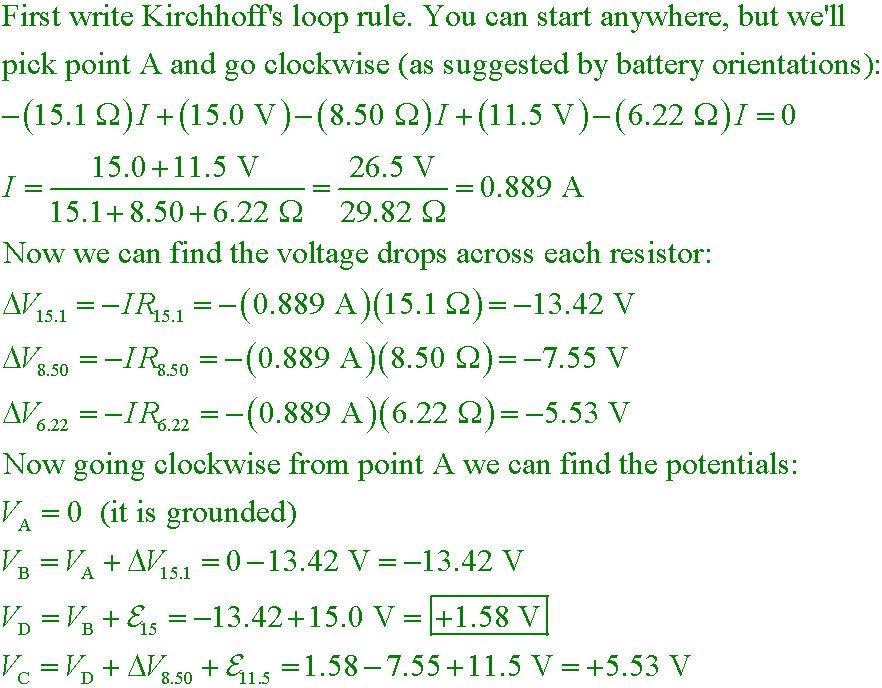


 A. 15.2 V
A. 15.2 V

 A. 0 V
A. 0 V


